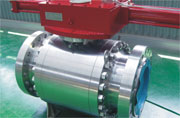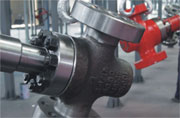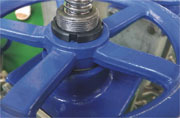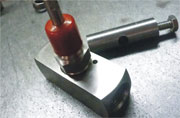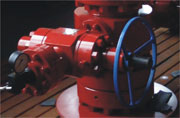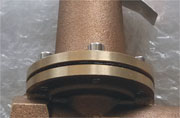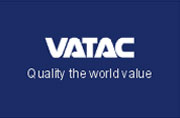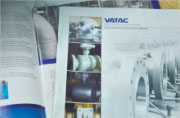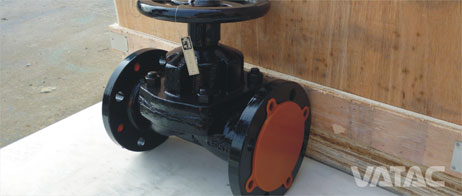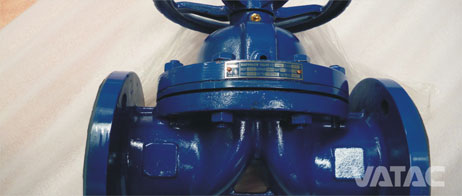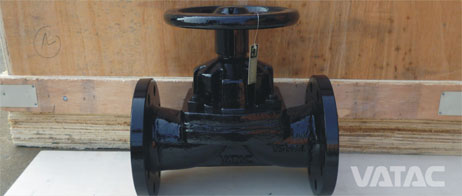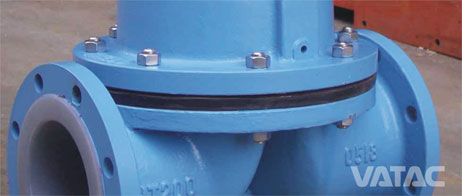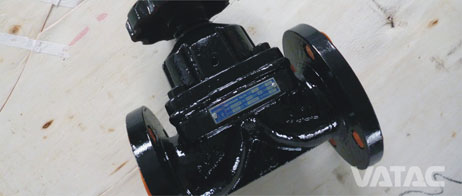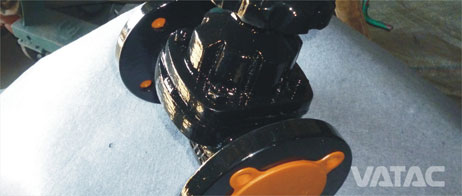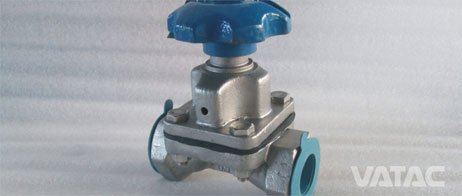Vatac diaphragm valves are engineered for tough work environments in the chemical processing, water treatment, pollution control, food and beverage, mining, pharmaceutical, pulp and paper, power generation industries. Diaphragm valves are available in two basic forms: weir type and straight through types. The weir design is best for general use applications or for tough corrosive and abrasive services. The straight through type can be used in situations where the flow direction changes within the system. They are excellent for use with sludge, slurries and other viscous fluids. Both styles provide a streamlined path for fluid flow that yields minimal pressure drop across the valve. Diaphragm valves (or membrane valves) consists of a valve body with two or more ports, a diaphragm, and a "saddle" or seat upon which the diaphragm closes the valve. The valve is constructed from either plastic or steel. The flow transfer and control category covers a wide spectrum of products designed to facilitate, control, maintain, meter, or read the flow of material through hoses, pipes or tubing. The material in question can be liquid, gaseous, or semi-solid (colloids and slurries). The following families fall within this category: valves, valve actuators and positioners, dispensing valves, pumps, flow sensing, level sensing, density and specific gravity sensing, viscosity sensing, and miscellaneous related products. Diaphragm valves can be manual or automated. Their application is generally as shut-off valves in process systems within the food and beverage, pharmaceutical and biotech industries. The older generation of these valves is not suited for regulating and controlling process flows, however newer developments in this area have successfully tackled this problem; Manual diaphragm valves are ideal for flow control by offering a variable and precise opening for controlling pressure drop through the valve. Actuated varieties can offer features as adjustable opening, positioners for precise flow control, and electric relay of valve position.
The advantages provided by diaphragm valves are various. They are extremely clean, and can form a nearly leak-proof seal for tight shut-off. The diaphragm design provides for easy maintenance and repair as it can be replaced without disturbing the piping line. However, they are limited they are limited to moderate temperature (-60 to 450°F) and pressure service (approximately 300 psi) by the mechanical properties of most common diaphragm materials. They cannot be used in multi-turn operations.
The Vatac Diaphragm Valve is typically one of the most economical valve solutions in chemical applications due to the wide choice of wetted materials.
● PATTERNS AVAILABLE IN BOTH WEIR TYPE AND STRAIGHT THROUGH BODY, WITH OR WITHOUT LINNING
STANDARDS COMPLIANCE:
▲ ASME B16.34, DIN 3202, BS 5156
▲ ASME B16.10, MSS SP-71, BS EN558
▲ ASME B16.1 CLASS 125, ASME B16.5 CL150, EN1092, EN12226
▲ ISO 5208, BS 4504
▲ Sizes: DN50 through DN400
▲ Body Styles: End connections Flanged, Welded or Threaded Ends
▲ Pressure Class: ANSI #125B, 150B, PN6, PN10, PN16
▲ Actuations Handwheel, Electric, Pneumatic, Hydraulic or E-Hydraulic
The Vatac Diaphragm Valves have been solving many fluid control problems in both general industrial applications and those corrosive areas for over 30 years. Today Vatac Technologies is putting that experience to work for you in more ways than ever before- meeting your changing needs with dependable Vatac Diaphragm Valves and accessories.










